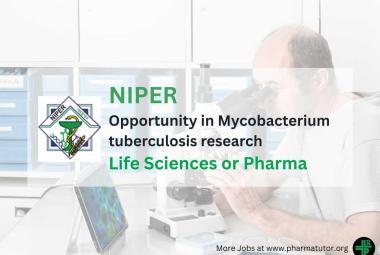 About Author: Amit Surani,
About Author: Amit Surani,
Dept. of Quality Assurance,
M.Pharm, Maliba College of Pharmacy, Surat
Gujarat Technical University
ABSTRACT
According to FDA, Process Analytical Technology (PAT) is a system for designing, analyzing, and controlling manufacturing process through timely measurements of critical quality and performance attributes of raw materials, in-process materials and processes with the goal of ensuring final product quality.
PAT involves the use of different technologies and tools to build quality into the products. Effective PAT implementation is based on detailed, science-based understanding of the physical, chemical and mechanical properties of all elements of the proposed drug product.
Pharmaceutical companies face many challenges while implementing PAT into their new and pre-existing manufacturing processes. This article discusses the challenges encountered by manufacturers and the benefits they can reap by successful implementation of PAT.
[adsense:336x280:8701650588]
INTRODUCTION:
According to FDA, Process Analytical Technology (PAT) is a system for designing, analyzing, and controlling manufacturing process through timely measurements of critical quality and performance attributes of raw materials, in-process materials and processes with the goal of ensuring final product quality.
It is an integrated toolkit of multivariate analysis tools, data acquisition and analysis, process analyzers, process control, as well as continuous improvement and knowledge management. Physical, chemical and biological properties of materials can be derived from PAT measurements. PAT can be utilized off-line, at-line, on-line and in-line.
HISTORY1
In September 2004 the USFDA released a document for the industry entitled “PAT guidance” for industry: “A framework for innovative pharmaceutical development, manufacturing, and quality assurance.”
PAT IMPLEMENTATION2, 3
Key differences between current practices in pharmaceutical manufacturing and a PAT approach :
- The use of novel analytical technologies
- The establishment of multifactorial relationships between materials, process and environmental conditions, and an understanding of the consequences of these relationships for product quality and process robustness
- The use of knowledge management tools
Four key elements in PAT implementation:
1. Building a science-based knowledge base - Complete process understanding at the mechanistic and first principle level
2. Process monitoring and control - Determination of critical process parameters and critical quality attributes and selection of measurement, analysis and control mechanisms to adjust the process to provide the predicted quality of the product.
3. Validation of a PAT system
4. Regulatory strategies
1. Building a science-based knowledge base
The PAT guidance emphasizes the need to develop a deep understanding of the underlying scientific principles behind pharmaceutical manufacturing processes to determine the parameters critical to process and product quality. The knowledge base provided by the PAT approach is valuable in three main ways:
- It is a foundation for robust process and product design.
- It supports and justifies flexible regulatory paths for innovative new approaches.
- It facilitates continuous learning throughout the product life cycle.
The design of experiments, and the capture and evaluation of analytical measurement data are essential parts of building the knowledge base.
Examples of sources of variation
· Variations in the raw material supplier manufacturing processes that impact the chemical and physical attributes of the supplied materials.
- Time-based variations in manufacturing performance (e.g., between equipment maintenance events).
- Long-term equipment ageing and degradation effects.
- Effects linked to planned changes to equipment/analyser hardware and software.
- Individual ways of working (i.e., variations attributable to people).
- Changes in the local environment (e.g., temperature and humidity).
2. Process monitoring and control
· The understanding of the interaction between process and product is the basis for the design of the process monitoring, process control and QA strategies used in manufacturing.
· PAT is an integrated approach in which the results obtained from the real-time analysis of critical process control points are used to control the process in some way. During manufacturing, process parameters are adjusted (within clearly defined limits) to produce the desired product quality attributes at the process end-point.
· The automation systems required for this level of process control are available today and are used extensively in the chemical and petrochemical industries
· Technologies used in PAT include:
Near-Infrared(NIR), Raman Spectroscopy, UV-visible Spectrophotometry, Fourier Transform Infrared (FTIR), X-Ray Powder Diffraction (XRPD), Terahertz Pulse (TP) spectroscopy, NIR microscopy, Acoustic Resonance (AR) spectrometry, thermal effusivity, etc. NIR spectroscopy is the most popular and widely used technique.
3. Validation of a PAT system4
The validation plan for a PAT system will typically include the validation of
· Process analyser hardware and software
· Software packages for data analysis
· Process control software
· IT systems for the management, storage and backup of results
4. Regulatory strategies
· PAT is a joint initiative of the Centre for Drug Evaluation and Research (CDER), Office of Regulatory Affairs (ORA) and the Centre for Veterinary Medicine (CVM) within the "cGMPs for the 21st Century" framework.
· A PAT policy development team of four subject matter experts has been established to work with industry to facilitate discussion on proposed PAT approaches at an early stage and support FDA's science and risk-based approach to PAT.
· A PAT review and inspection team has been established, which includes reviewers, compliance officers and inspectors who have been trained and certified in the PAT approach.
POTENTIAL BENEFITS OF PAT
· Reduction in batch failure
· Increased operational efficiency
· Increased process understanding and continuous improvement
· Ability to transfer the learning to other unit operations and products
· More data-driven decisions
PAT APPLICATIONS AT FOLLOWING SITES5
• RM Testing (warehouse based)
• Packaging Components
• Blending (at-line or on-line)
• Drying
• Tableting (potency and CU)
• Encapsulation (potency and CU)
• Tablet Coating (coating thickness)
• Packaged product
• Equipment cleaning
• Equipment cleaning (surface monitoring)
CONCLUSION
• The aim of a PAT approach should be to implement robust processes that are flexible enough to accommodate a defined level of variability in process materials (physical and chemical attributes) through adjustment of the process conditions.
• A knowledge base created through the collection, analysis and evaluation of research, development and manufacturing data facilitates the design and implementation of a PAT system. The knowledge base also provides the justification for a science and risk-based approach to analytical method validation and process monitoring and control.
REFERENCES
1. fda.gov/oc/guidance/gmp.html
2. FDA, “Guidance for industry: PAT – A Framework for innovation Pharmaceutical Development, Manufacturing and Quality assurance,” Center of drugs evaluation and research, Food and Drug Administrative.
3. General Principles of Software Validation; Final Guidance for Industry and FDA Staff, US Food and Drug Administration (CDER & CBER), January 2002.
4. Good Automated Manufacturing Practice (GAMP) Guide 4.0, International Society for Pharmaceutical Engineering (ISPE), December 2003.
5. Peter Scott, Process Analytical Technology: Applications to the Pharmaceutical Industry, Quality Assurance Analytical Services, AstraZeneca, Westborough.
Reference ID: PHARMATUTOR-ART-1036
FIND OUT MORE ARTICLES AT OUR DATABASE









